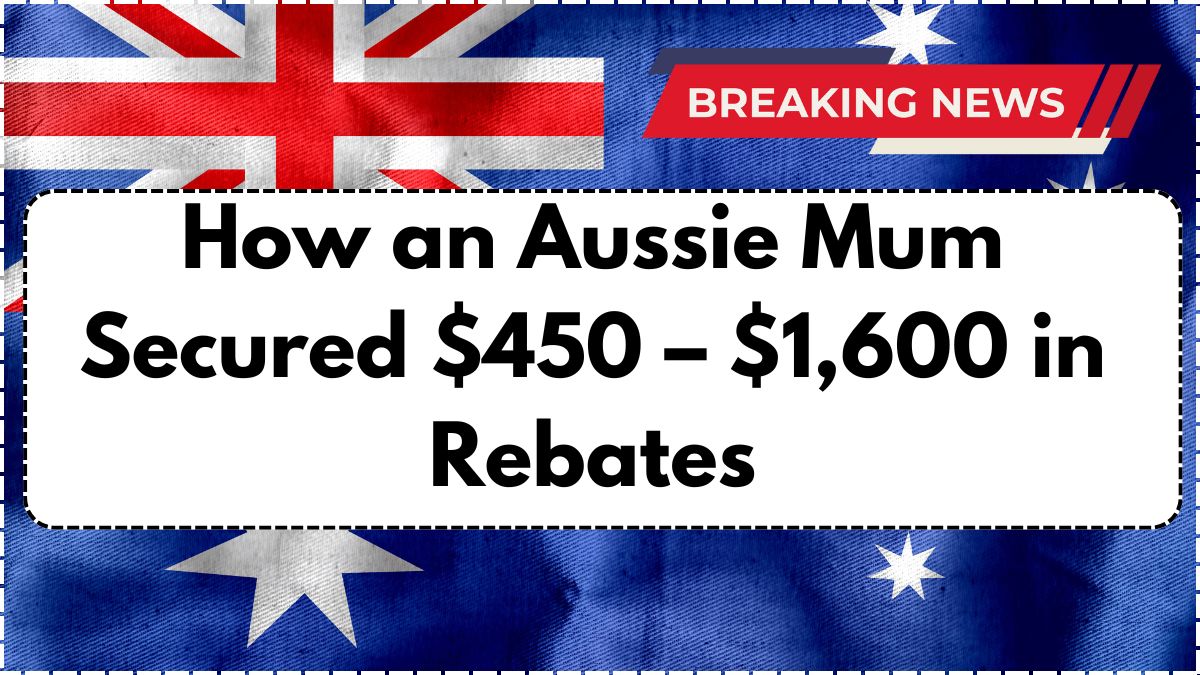With rising energy costs, many Australian households are actively seeking ways to lower their electricity bills. What was once considered a privilege for the wealthy—government rebates and energy-efficient technologies—is now accessible to everyone. Everyday Australians are discovering how to harness renewable energy, optimize their consumption, and take advantage of financial incentives to achieve significant savings.
One compelling example is Samantha Ho, a mother from Campbelltown, New South Wales, who successfully eliminated her power bill. Her journey demonstrates that with strategic planning, investment, and lifestyle adjustments, achieving a zero-energy bill is possible.

Samantha Ho’s Zero Bill Success Story
Samantha Ho and her family, living in Western Sydney, faced the reality of increasing electricity prices and decided to take action. Their goal was ambitious: to eliminate their energy costs entirely. This required careful planning, investments in energy-efficient solutions, and a willingness to adapt their energy consumption habits.
Monitoring Energy Consumption
The first step in their journey was understanding their household’s energy usage. Samantha closely tracked electricity consumption to identify major energy drains. This insight helped her adjust their habits and make more informed decisions on energy-efficient upgrades.
Upgrading to Energy-Efficient Appliances
To reduce electricity usage, Samantha replaced old appliances with energy-efficient models. A crucial upgrade was the installation of a heat pump, which consumes significantly less energy compared to conventional heating systems. Additionally, they switched to LED lighting and ensured all appliances carried high Energy Star ratings, further improving efficiency.
Switching to Solar Energy
The most impactful change came from installing solar panels. This allowed the household to generate its own electricity, reducing dependence on the grid. To maximize efficiency, they adjusted appliance usage—running the washing machine, dishwasher, and other power-hungry devices during peak sunlight hours.
Transitioning to an Electric Vehicle
To further cut costs, Samantha’s family switched to an electric vehicle (EV), drastically reducing fuel expenses. Charging the EV during the day using surplus solar power ensured that transportation remained cost-free as well.
Achieving a Zero Bill and Beyond
Through these strategic efforts, the household’s quarterly electricity and gas bill, which previously averaged $450, was eliminated. In some months, they even received a credit from their energy provider for surplus solar power fed back into the grid.
Government Rebates and Incentives
To support Australians in transitioning to renewable energy, federal and state governments offer various rebates and funding programs. These incentives played a crucial role in Samantha’s success and can make sustainable energy solutions more affordable for other households.
Available Energy Rebates
The government provides multiple rebates to encourage energy efficiency, including:
- $150 Automatic Energy Rebate: Many Australian households qualify for an automatic energy discount.
- Solar Battery Rebates: Several states offer financial assistance for installing solar battery storage, making it easier to store energy for nighttime use.
- Solar Panel Rebates: Homeowners can receive incentives that cover a portion of solar panel installation costs.
- Energy-Efficiency Grants: Programs that support upgrades such as heat pumps, insulation, and efficient heating systems.
These rebates can amount to thousands of dollars, significantly reducing the upfront costs of transitioning to renewable energy.
Practical Steps to Reduce Your Energy Bills
If you want to follow Samantha Ho’s example and lower your electricity costs, consider these actionable steps:
| Step | Action | Benefit |
|---|---|---|
| 1. Track Energy Usage | Use tracking apps or request reports from your electricity provider. | Identify high-energy appliances and adjust habits. |
| 2. Upgrade Appliances | Invest in energy-efficient models with high Energy Star ratings. | Reduce long-term energy consumption and costs. |
| 3. Apply for Government Rebates | Research available incentives for solar panels, batteries, and efficiency upgrades. | Lower initial investment costs. |
| 4. Install Solar Panels | Generate your own electricity and reduce grid dependency. | Potentially eliminate energy bills entirely. |
| 5. Optimize Appliance Usage | Run major appliances during peak solar hours. | Maximize self-generated energy use. |
| 6. Consider Battery Storage | Store excess solar energy for nighttime use. | Minimize reliance on the grid. |
| 7. Review Your Energy Plan | Compare providers to ensure you’re on the best plan. | Avoid overpaying for electricity. |
By following these steps, you can gradually decrease or even eliminate your power bills while contributing to a more sustainable environment.
Final Thoughts
Reducing your energy bills to zero is not an overnight process, but with the right approach, it is achievable. By tracking your energy usage, upgrading appliances, leveraging government rebates, and making smart investments like solar panels and battery storage, you can significantly lower household costs. Samantha Ho’s story is proof that with careful planning and commitment, financial savings and environmental sustainability can go hand in hand.
Start taking steps today to cut down your power bills and create a more energy-efficient home!
Frequently Asked Questions (FAQs)
1. Is installing solar panels worth the investment?
Yes, solar panels can significantly reduce or eliminate electricity costs. With government rebates and decreasing installation prices, the return on investment is quicker than ever.
2. What is the best way to maximize solar panel efficiency?
Use high-energy appliances (e.g., washing machines, dishwashers) during daylight hours when solar panels are generating power. Additionally, consider installing a battery storage system to use solar energy at night.
3. Can renters take advantage of energy rebates?
Some rebates and incentives apply to renters, such as appliance upgrade programs. Renters should also encourage landlords to install solar panels or energy-efficient systems.
4. How do I know if I qualify for energy rebates?
Visit government energy websites or contact local energy providers to check eligibility for rebates and incentives available in your area.
5. How much can I save by switching to an electric vehicle (EV)?
Switching to an EV can significantly lower transportation costs, especially when charged using home solar power. Fuel savings alone can be thousands of dollars annually.
For More Information Click Here
Pari is a passionate writer known for captivating stories that blend imagination and reality. Inspired by travel, history, and everyday moments, Pari crafts narratives that resonate deeply with readers.
